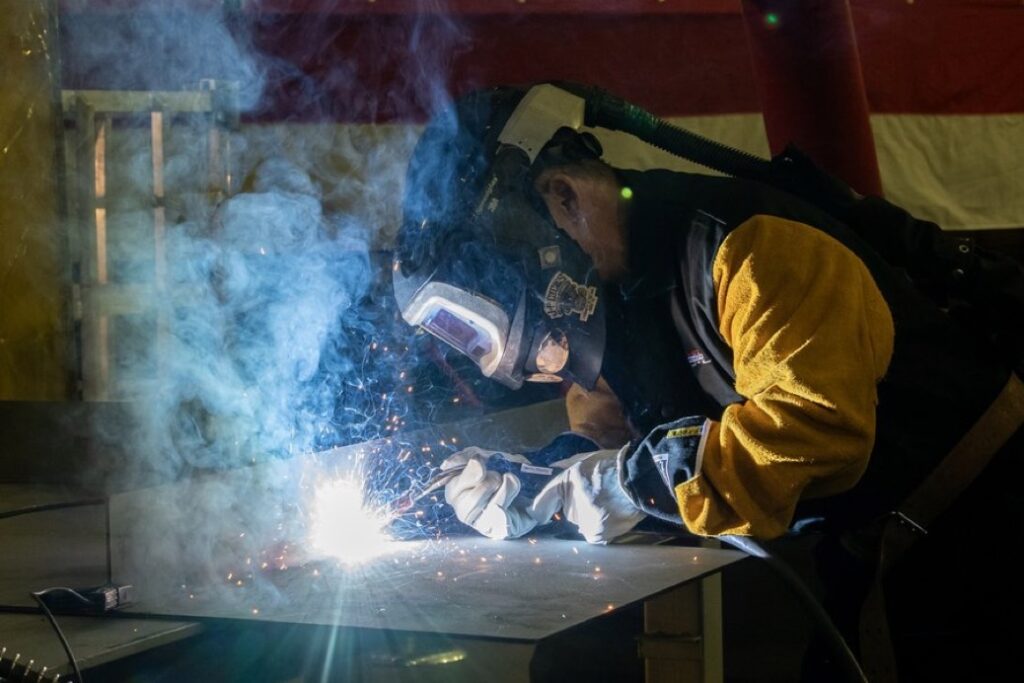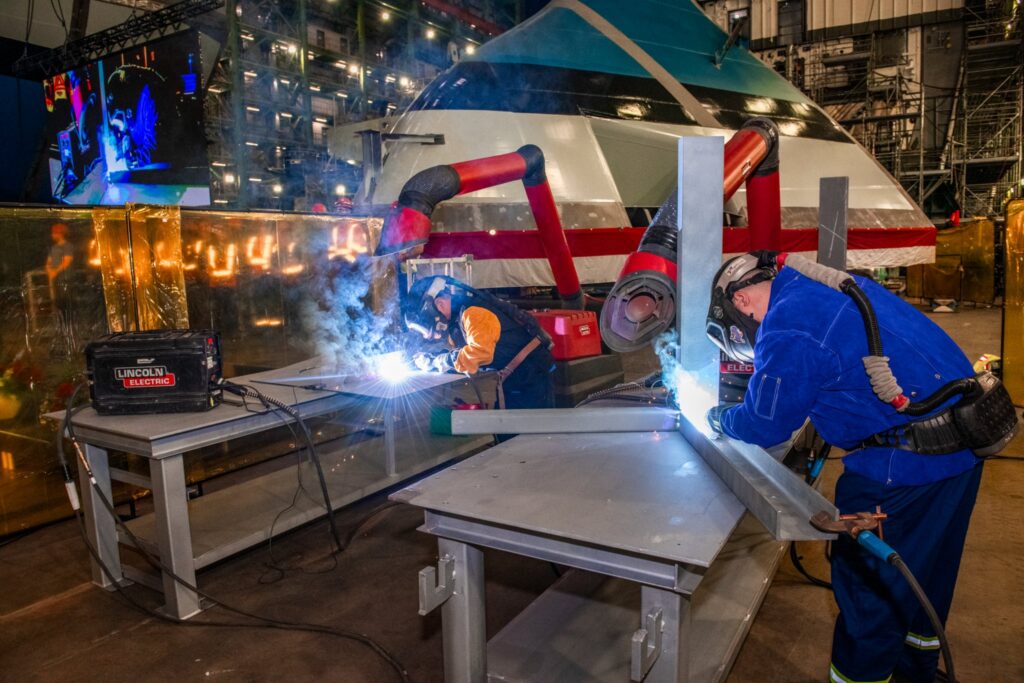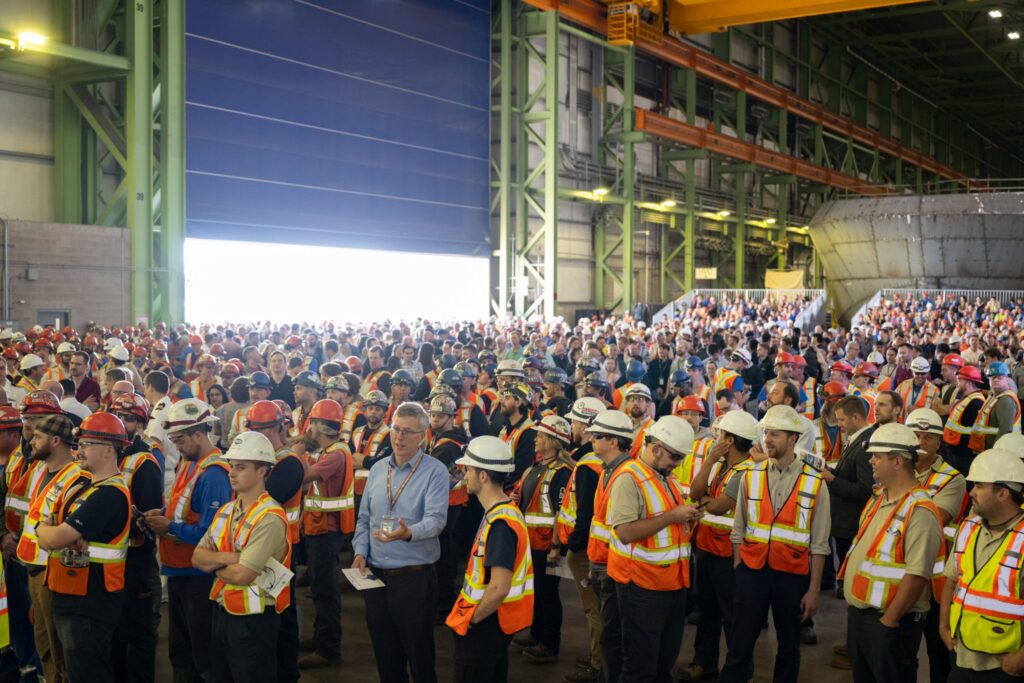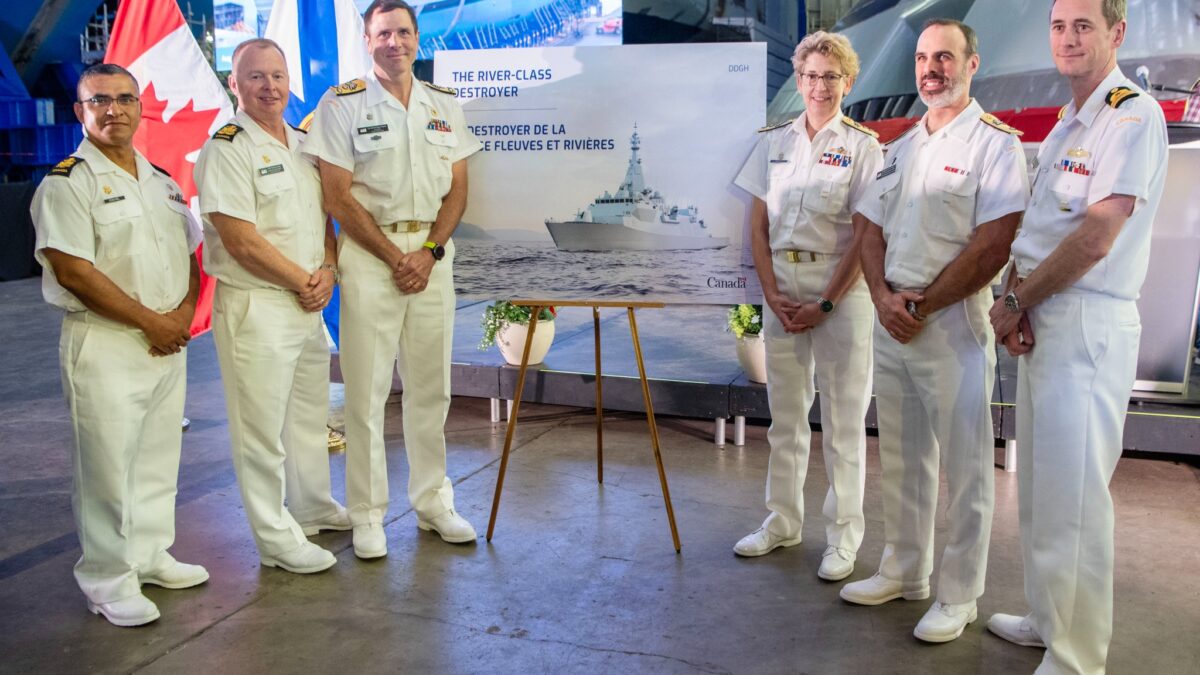A significant milestone was celebrated on June 28, 2024, in the maritime city of Halifax, as construction officially began on Canada’s advanced fleet of Canadian Surface Combatants (CSC). This event was marked by the presence of the Honourable Bill Blair, Minister of National Defence, Vice-Admiral Angus Topshee, Commander of the Royal Canadian Navy (RCN), and Dirk Lesko, President of Irving Shipbuilding Inc.
Unveiling the River-Class Destroyers
In a momentous announcement, Minister Blair and Vice-Admiral Topshee revealed that this new fleet would be christened the River-class destroyers. The first trio of these formidable warships will bear the names His Majesty’s Canadian Ships (HMCS) Fraser, Saint-Laurent, and Mackenzie. These names are deeply symbolic, representing Canada’s major waterways that flow into the Pacific, Atlantic, and Arctic oceans. Moreover, they pay homage to historical Canadian warships that distinguished themselves through their valor and technological prowess during wartime. This nomenclature not only honors past heroes but also aims to instill a sense of pride among today’s sailors, connecting them to Canada’s rich maritime legacy.
“Today, we launch construction on the largest Canadian shipbuilding project since the Second World War, marking an historic milestone for the Royal Canadian Navy. The River-class destroyers will provide the Canadian Armed Forces with the tools that they need to defend our national interests for decades to come – and ensure that Canada can deploy a state-of-the-art, combat-ready fleet of warships to defend our country and support our allies. As we invest in this new fleet, we are also supporting Canada’s shipbuilding industry and thousands of well-paying, skilled jobs. Bravo Zulu to everyone who has helped us reach this important day,” remarked the Honourable Bill Blair, Minister of National Defence.
A Historic Undertaking
The CSC project stands as Canada’s largest and most intricate shipbuilding endeavor since World War II, marking a landmark investment in modernizing the RCN’s surface fleet. These state-of-the-art warships are poised to significantly enhance Canada’s naval capabilities both domestically and internationally for many years. The River-class destroyers will form the backbone of Canada’s maritime defense, ensuring the protection of our coastal waters and contributing robustly to global naval operations alongside our allies.

“The Canadian Surface Combatant project is at the core of our government’s commitment to revitalize Canada’s marine industry through the National Shipbuilding Strategy. The start of construction activities marks a significant milestone in the efforts to re-build Canada’s shipbuilding industry, bringing highly skilled jobs and economic benefits to Canadians during construction and throughout the operational life of the class. These modern ships will be critical to ensuring the ongoing ability of the members of the Royal Canadian Navy to continue their important work protecting Canadians,” said the Honourable Jean-Yves Duclos, Minister of Public Services and Procurement.

The Construction Journey Begins
Today also saw the commencement of work on the production test module (PTM), a crucial step that will allow the Government of Canada and Irving Shipbuilding Inc. to refine and optimize the construction process. This preparatory phase is essential for achieving full production capacity by 2025. The first of the River-class destroyers, HMCS Fraser, is slated for delivery in the early 2030s, with the final vessel expected by 2050.
“The start of construction on the Canadian Surface Combatants today marks a pivotal moment for Canada’s maritime defence sector. This significant investment not only strengthens our national security but also supports thousands of jobs and fosters growth in Canada’s marine supply chain, demonstrating our commitment to sustainable economic development and leadership in the shipbuilding industry,” explained the Honourable François-Philippe Champagne, Minister of Innovation, Science and Industry.
Economic Impact and Job Creation
The CSC project promises to stimulate sustainable growth within Canada’s marine supply chain. Over the 25-year construction period, it is projected to create or maintain around 10,800 jobs annually nationwide and generate a cumulative Gross Domestic Product (GDP) of at least $40 billion. The design phase alone is expected to contribute $5.1 billion to the GDP and sustain approximately 5,000 Canadian jobs each year.

Strengthening Canada’s Defense Industry
Aligned with Canada’s renewed defense vision, “Our North, Strong and Free,” the government is committed to fostering a transparent, stable, and long-term partnership with the national defense industry. The CSC initiative exemplifies this commitment by investing in Canada’s domestic shipbuilding sector while simultaneously equipping the RCN with a fleet of contemporary, efficient ships ready to support future operations.
“The selection of an official name for our highly capable destroyers is an exciting moment for the RCN and perfectly timed as today marks the very beginnings of the construction process for the River-class – a clear sign of tangible progress towards our future fleet. The River-class embodies the waterways which are the veins and arteries of our nation and celebrates some of the great ships from the RCN’s history,” said Vice-Admiral Angus Topshee, Commander, Royal Canadian Navy.
Cutting-Edge Design and Capabilities
Based on BAE Systems’ Type 26 warship design, which is also being constructed for the United Kingdom and Australia, the River-class ships will be outfitted with advanced underwater sensors, state-of-the-art radar, and modern weaponry. Officially designated as DDGH – a destroyer (DD), guided missile (G) capable, and helicopter (H) equipped – these vessels will replace both the Iroquois-class destroyers and the Halifax-class frigates. Designed for speed, maneuverability, and endurance, the River-class destroyers will provide anti-aircraft and anti-submarine defense, as well as the capability to escort larger ships within a fleet or battle group.
As Canada embarks on this ambitious project, the River-class destroyers are set to become a symbol of national pride and a testament to the country’s commitment to maintaining a robust and capable naval force.

